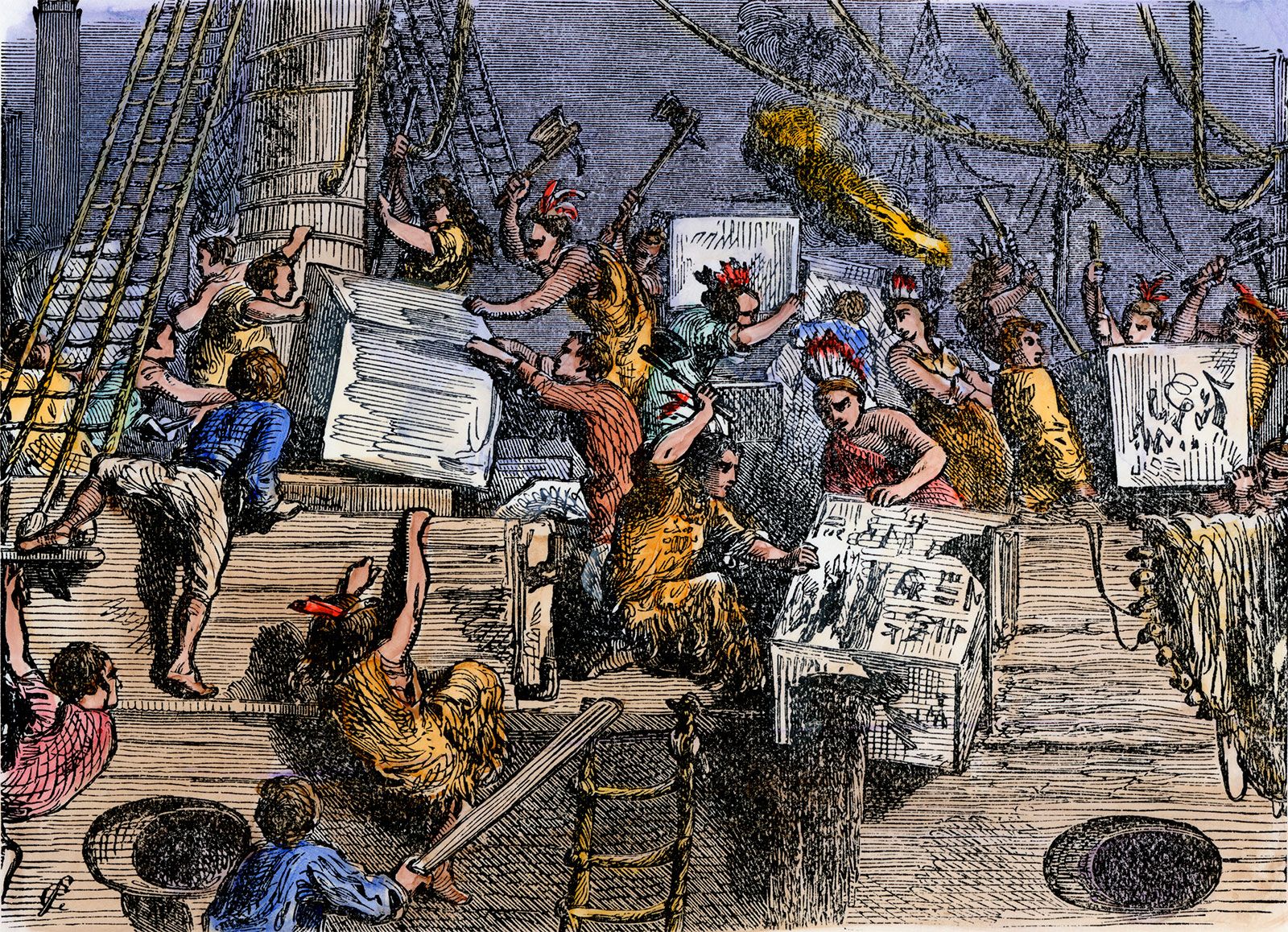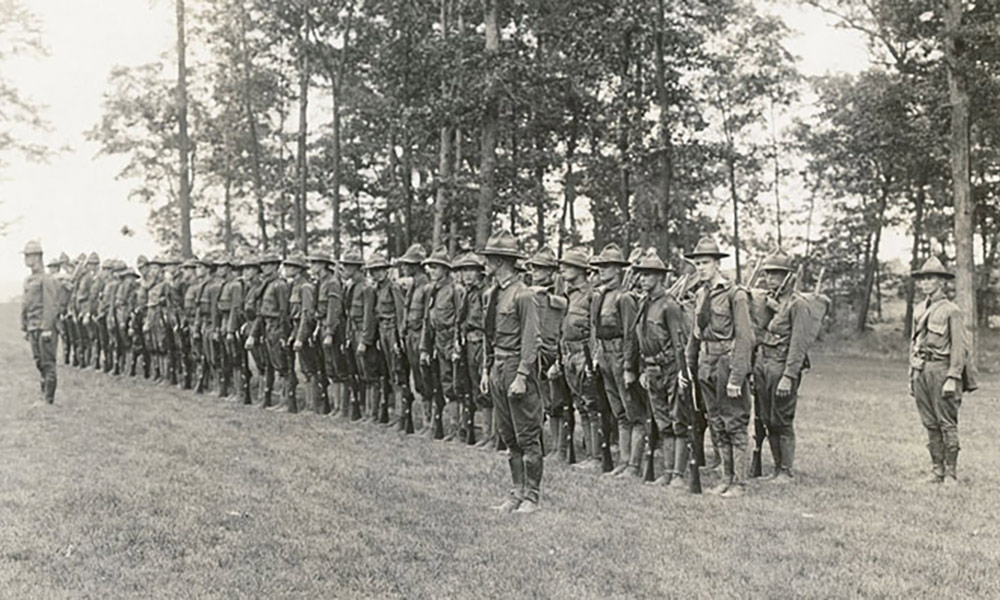In December 1773, an event took place that would forever mark a pivotal moment in American history – the Boston Tea Party. This bold act of rebellion, carried out by a group of American colonists, would not only ignite the flames of independence, but also solidify the resolve of a nation yearning for freedom from British rule.
It was a dark and chilly evening on December 16, 1773, when a band of determined colonists, dressed inconspicuously as Mohawk Indians, made their way onto three British ships docked in the Boston Harbor. These ships, laden with tea from the East India Company, symbolized the British government’s authority and imposition of taxes on the American colonies.
Arriving under the cover of darkness, the men wasted no time in methodically unloading hundreds of crates of tea from the ships. With a sense of urgency and deep conviction, they hurled the precious cargo into the frigid waters of the harbor. The floating tea leaves transformed the harbor into a sea of resistance, each leaf a symbol of defiance against the oppressive British regime.
This audacious act of civil disobedience was a direct response to the passing of the Tea Act earlier that year. This legislation granted the British East India Company a monopoly on tea sales in the American colonies while imposing hefty taxes on imported tea. This blatant disregard for the colonists’ rights ignited simmering anger and frustration that had long been brewing.
The significance of the Boston Tea Party cannot be overstated. It sent shockwaves throughout the colonies, galvanizing the American people and instilling a sense of unity in their fight for freedom. It was a visible manifestation of their collective will to resist tyranny and reclaim their rights as citizens.
The repercussions of this act were swift and severe. In response to this act of open rebellion, the British government instated the Intolerable Acts, a series of punitive measures designed to assert control over the restive colonies. This, in turn, led to increased tensions between the American colonists and the British Crown, bringing them one step closer to the inevitable clash that would ignite the American Revolution.
The Boston Tea Party stands as a testament to the indomitable spirit of the American people. It was a pivotal moment in the fight for independence, a tangible symbol of the lengths the colonists were willing to go to secure their freedom. Today, it serves as a reminder of the sacrifices made and the price paid by those who dared to challenge the status quo.
So, as we reflect upon this historic event, let us remember the brave souls who, on that fateful night in December 1773, took a stand against injustice and sparked a revolution. The Boston Tea Party was not just an act of defiance; it was the opening salvos of a revolution that would shape the destiny of a nation.
More About : When Did The Boston Tea Party Happen
Introduction:
The Boston Tea Party was a crucial turning point in American history, marking the beginnings of the American Revolution. It took place on the evening of December 16, 1773, in Boston, Massachusetts. This event saw a group of American colonists, disguised as Native Americans, board three British ships docked in the Boston Harbor and dump chests of tea into the water. The purpose of this act was to protest against the excessive taxation imposed by the British government on tea imported into the colonies. This article will delve into the details surrounding the Boston Tea Party and the motivations behind it.
1. Historical Context:
a. British taxes on the colonies:
– Explain the increase in taxes after the French and Indian War.
– Describe the Stamp Act and the Townshend Acts.
– Highlight the resentment it caused among the colonists.
2. The Tea Act:
a. Overview of the Tea Act:
– Explain the Tea Act and its implications.
– Describe the British East India Company’s monopoly on tea.
– Discuss the colonial reaction to the Tea Act.
b. Opposition to the Tea Act:
– Highlight the boycott of British tea.
– Discuss the role of the Sons of Liberty and other colonial organizations.
3. Planning the Boston Tea Party:
a. Committees of Correspondence:
– Discuss the establishment of the Committees of Correspondence.
– Describe their role in organizing the Boston Tea Party.
– Explain how they helped spread the message of resistance.
b. Choosing the participants:
– Highlight the involvement of notable figures such as Samuel Adams.
– Describe the selection process for participants.
– Emphasize the secrecy behind their disguises as Native Americans.
4. The Boston Tea Party:
a. The attack on the ships:
– Explain the events leading up to the attack.
– Describe the boarding of the ships.
– Detail the destruction of the tea.
b. Reactions and consequences:
– Discuss the immediate reactions from both British and colonial perspectives.
– Describe the punishments and repercussions imposed by the British government (e.g., Intolerable Acts).
– Highlight the impact of the Boston Tea Party on public opinion in the colonies.
Conclusion:
The Boston Tea Party was a pivotal event that showcased the colonists’ growing frustration with the British government and their determination to fight for their rights and freedom. Their act of defiance against the Tea Act set in motion a series of events that ultimately led to the American Revolution. By outlining the historical context, exploring the Tea Act, detailing the planning and execution of the Boston Tea Party, and analyzing the aftermath, this article provides a comprehensive understanding of this historic event. The Boston Tea Party served as a catalyst for change, inspiring and uniting colonists in their quest for independence from British rule.
FAQs on When Did The Boston Tea Party Happen
Q: When did the Boston Tea Party happen?
A: The Boston Tea Party occurred on the night of December 16, 1773.
Q: What was the main reason behind the Boston Tea Party?
A: The main reason behind the Boston Tea Party was the colonists’ opposition to the Tea Act imposed by the British Parliament.
Q: Where did the Boston Tea Party take place?
A: The Boston Tea Party took place in Boston, Massachusetts, specifically at Griffin’s Wharf.
Q: Who organized the Boston Tea Party?
A: The Sons of Liberty, led by Samuel Adams and other prominent patriots, organized the Boston Tea Party.
Q: How did the Sons of Liberty protest during the Boston Tea Party?
A: The Sons of Liberty protested by disguising themselves as Mohawk Indians and boarding three British ships in the Boston Harbor, then dumping approximately 342 chests of tea into the water.
Q: What were the consequences of the Boston Tea Party?
A: As a response to the Boston Tea Party, the British Parliament passed the Intolerable Acts, which included the Boston Port Act, the Massachusetts Government Act, the Administration of Justice Act, and the Quartering Act.
Q: Did the Boston Tea Party play a significant role in the American Revolution?
A: Yes, the Boston Tea Party played a significant role in the lead-up to the American Revolution by further fueling the rebellion against British rule and consolidating support for the colonists’ cause.
Q: Were any lives lost during the Boston Tea Party?
A: Fortunately, there were no lives lost during the Boston Tea Party. This event was mainly focused on protest and property destruction.
Q: How many chests of tea were thrown overboard during the Boston Tea Party?
A: Approximately 342 chests of tea, which is estimated to be around 92,000 pounds or 46 tons, were thrown overboard during the Boston Tea Party.
Q: What was the significance of the Boston Tea Party in terms of colonial resistance?
A: The Boston Tea Party became a powerful symbol of colonial resistance against unjust taxation, inspiring other American colonies in their struggle for independence from British rule.




